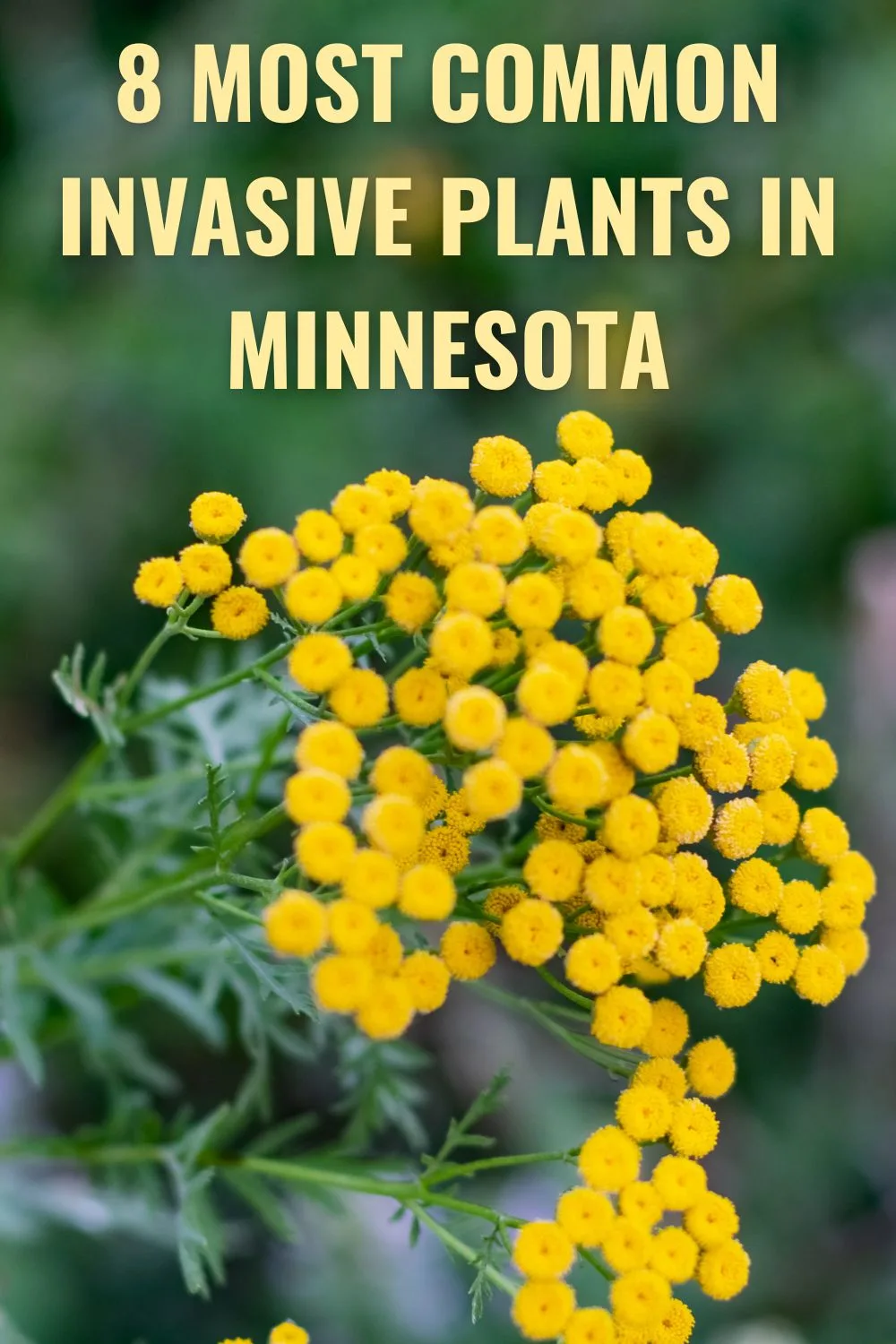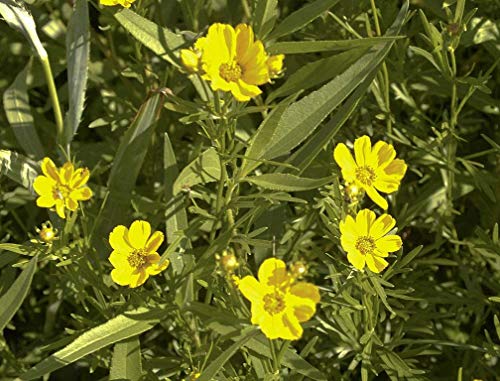As gardeners, we are in a great position to help fight invasive plants and protect native ecosystems. Invasive plants in Minnesota harm native plants and animals, damaging the state’s prairies, forests, wetlands, lakes, and rivers. They can impact our ability to enjoy natural spaces and even negatively affect agriculture and other important sectors.
But what can we do? Reading this guide is a great start! Learning about some of Minnesota’s most common invasive plants enables you to identify them on your property and take the appropriate steps to remove them. Then, you can have fun choosing among the many beautiful MN native plants to grow instead. To help you get started, we’ve included suggestions for native alternatives for each invasive plant listed below.
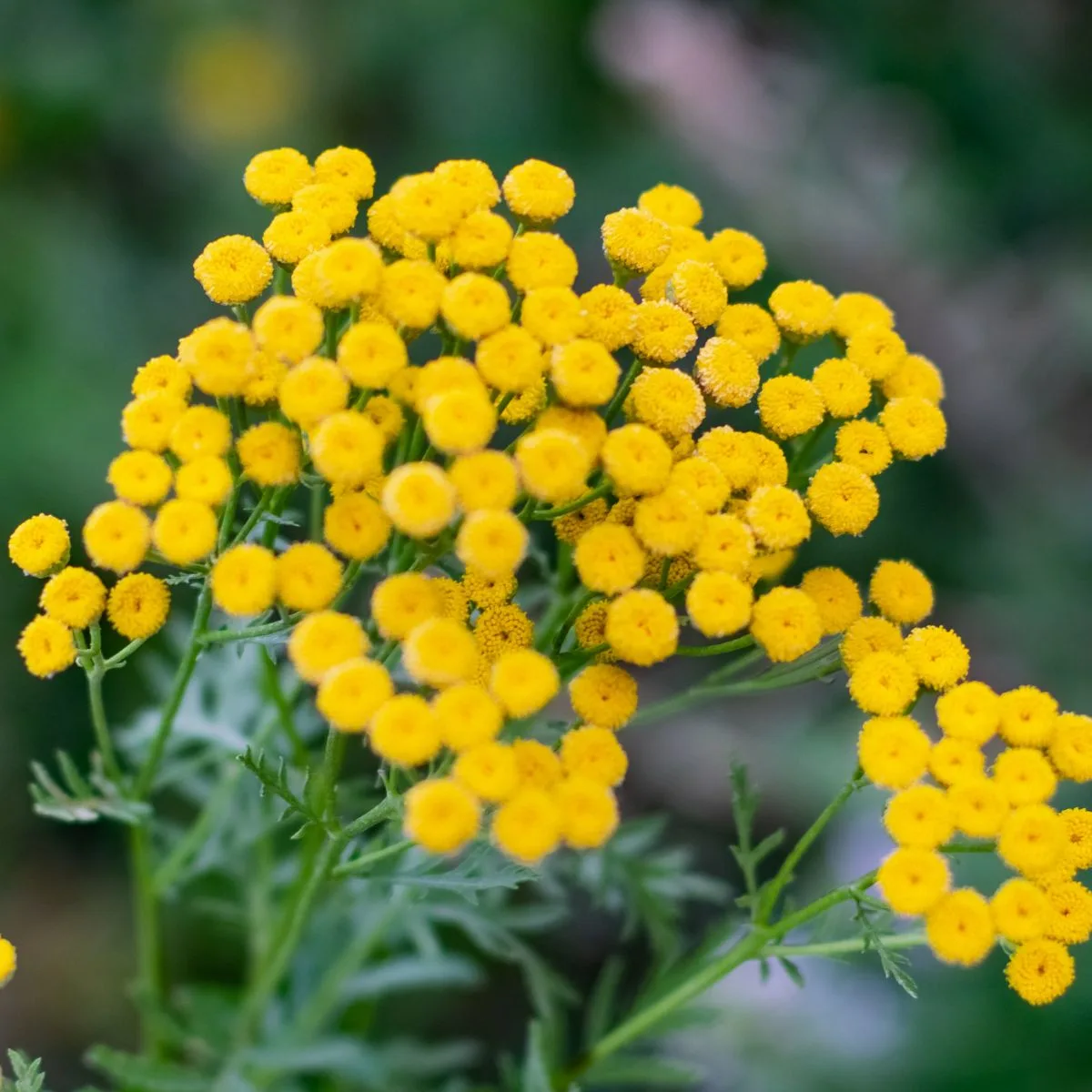
Invasive Plants in Minnesota
If you see any of the following invasive plants on your property, contact your local Extension Office for help removing them, or explore the helpful management recommendations provided by the Minnesota Department of Natural Resources. Improper treatment of an invasive plant can be ineffective or, worse, increase the spread of the plant!
1. Bush honeysuckles (Lonicera spp.)
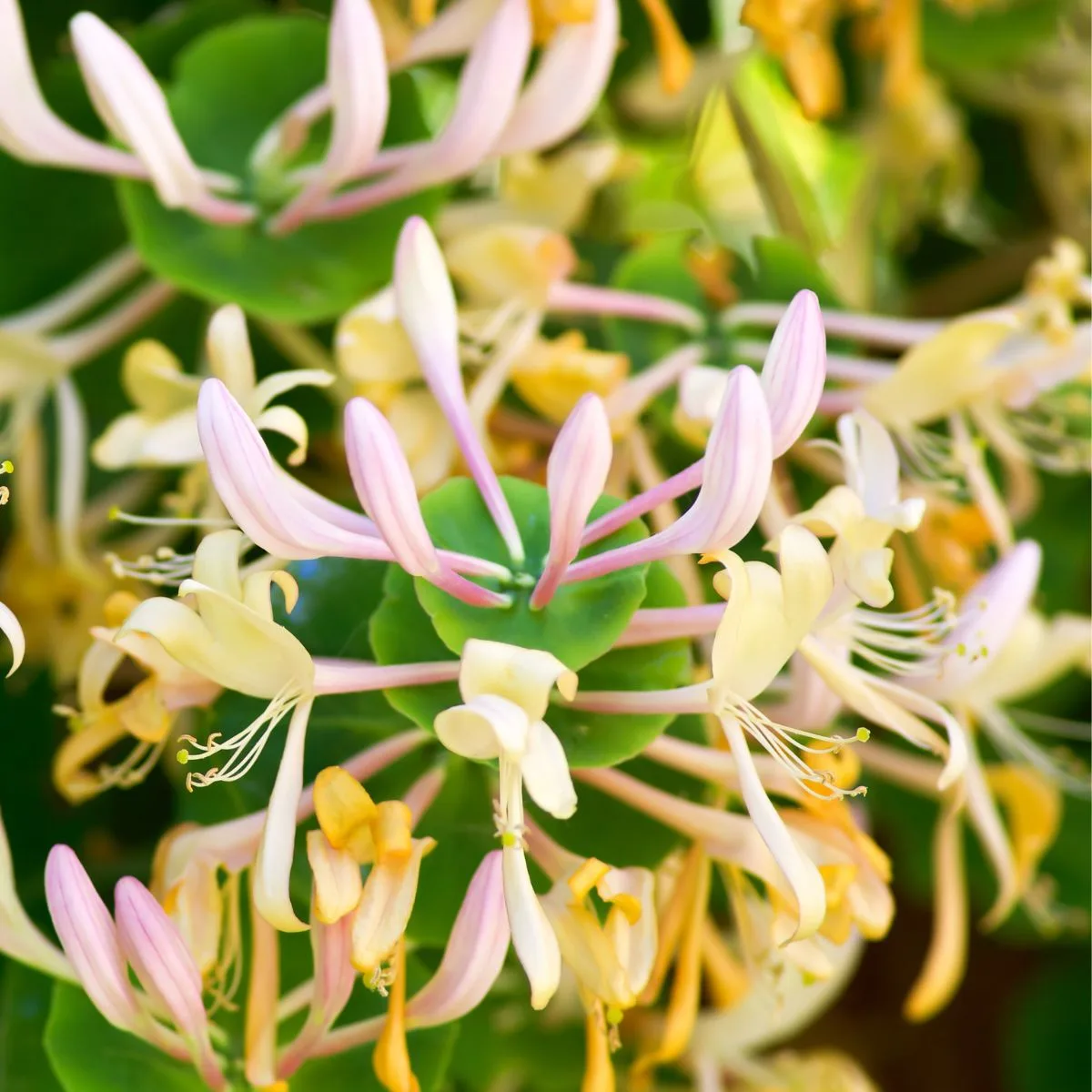
Four invasive bush honeysuckles pose a concern in Minnesota:
- Amur honeysuckle (L. maackii)
- Bell’s honeysuckle (L. x bella)
- Morrow’s honeysuckle (L. morrowii)
- Tatarian honeysuckle (Lonicera tatarica)
These upright deciduous shrubs have simple, oval leaves that grow in pairs, and the mature stems are hollow. The pale, tubular honeysuckle flowers bloom in May and June with their distinctive sweet fragrance. Red berries follow, appearing in pairs.
Plant native bush honeysuckle (Diervilla lonicera) instead, or choose another similar native shrub, such as black chokeberry (Aronia melanocarpa).
2. Common buckthorn (Rhamnus cathartica)
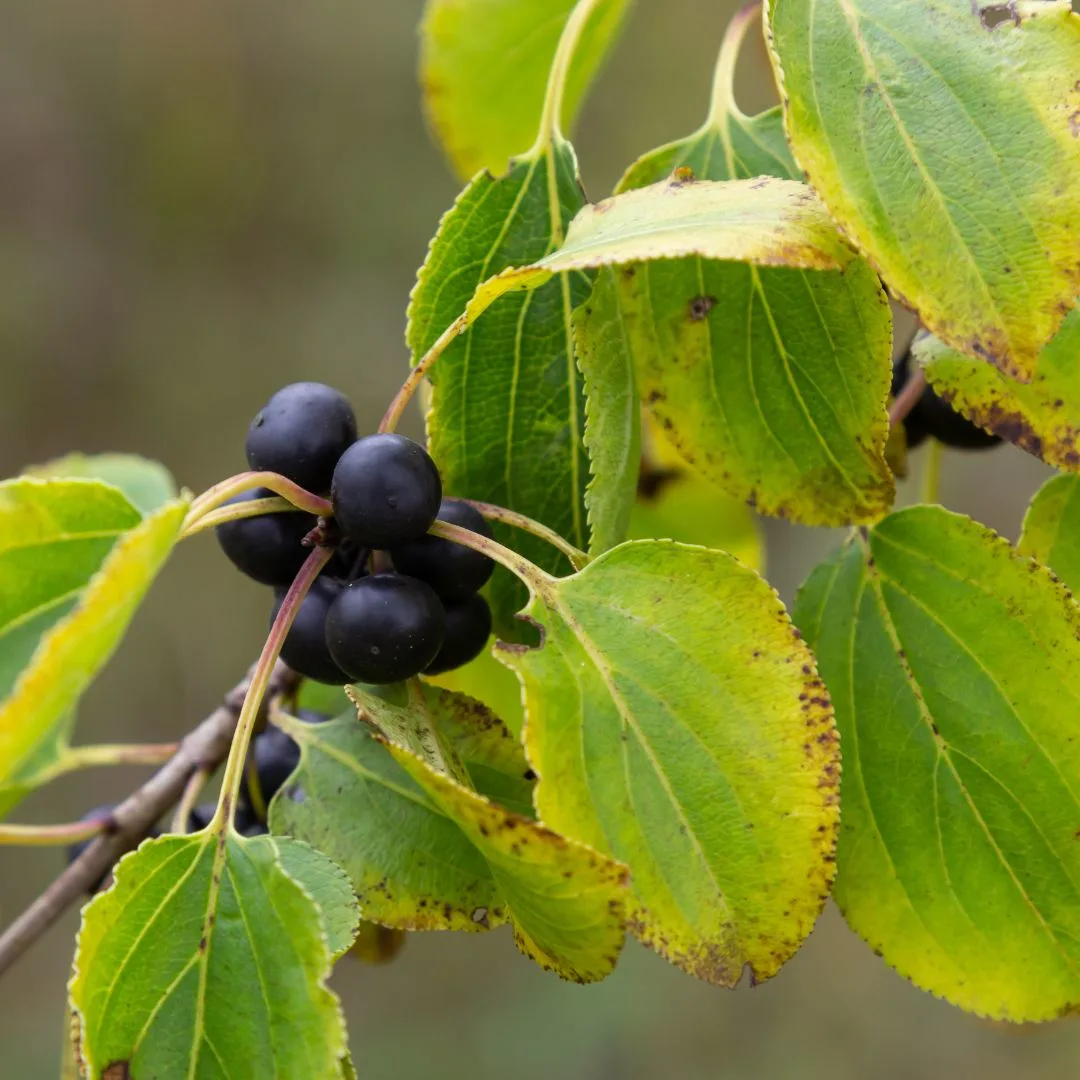
A large shrub or small tree, the common buckthorn grows up to 20 feet tall and forms dense thickets that crowd out native understory plants. The oval, alternate (sometimes opposite) leaves have finely toothed margins and three to five pairs of curved veins, and the branches often end in small, sharp thorns. Clusters of small, yellowish flowers bloom in May, followed by tiny black berries on female plants.
Lovely native alternatives include nannyberry (Viburnum lentago) and pagoda dogwood (Cornus alternifolia).
3. Glossy buckthorn (Frangula alnus)
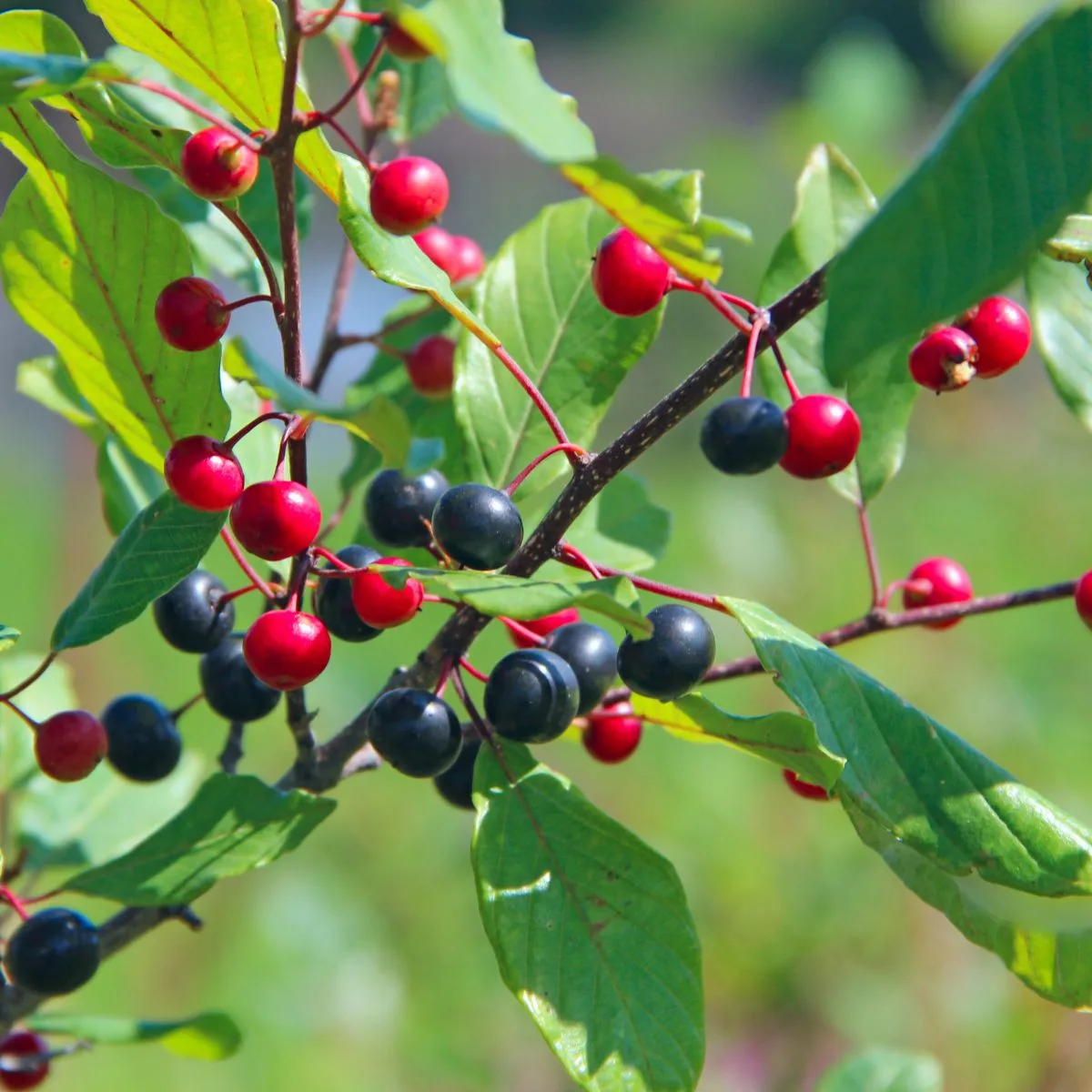
Similar to common buckthorn, glossy buckthorn grows as a tall shrub or small tree. However, its glossy oval leaves have smooth margins and eight to nine pairs of veins, and the branches do not have thorns at the tip. It also tends to prefer wetter conditions than its cousin, and its fruits ripen from red to dark purple.
For a similar but even showier native shrub or tree, try high bush cranberry (Viburnum trilobum) or grey dogwood (Cornus racemosa).
4. Common tansy (Tanacetum vulgare)
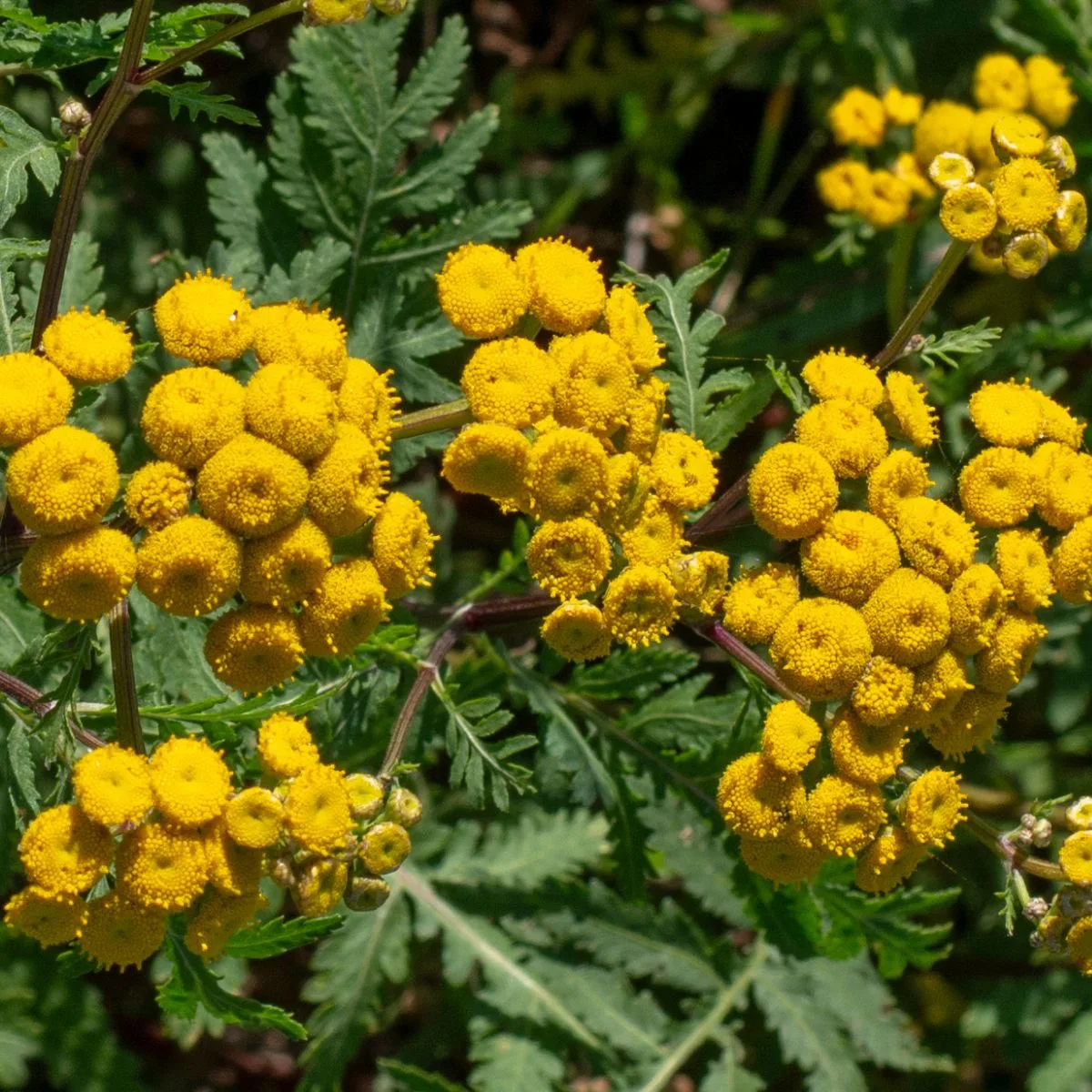
Known for its flat clusters of tiny, yellow, buttonlike flowers, common tansy is a perennial that grows three to five feet tall and forms dense stands. The alternate, pinnately compound leaves have a fernlike appearance, with serrated, irregularly lobed leaflets. When crushed, the foliage gives off a strong aroma. The flowers bloom July through October, followed by easily dispersed, tufted seeds.
Minnesota is home to many beautiful yellow wildflowers, including bird’s foot coreopsis (Coreopsis palmata) and false sunflower (Helianthus helianthoides).
5. Garlic mustard (Alliaria petiolata)
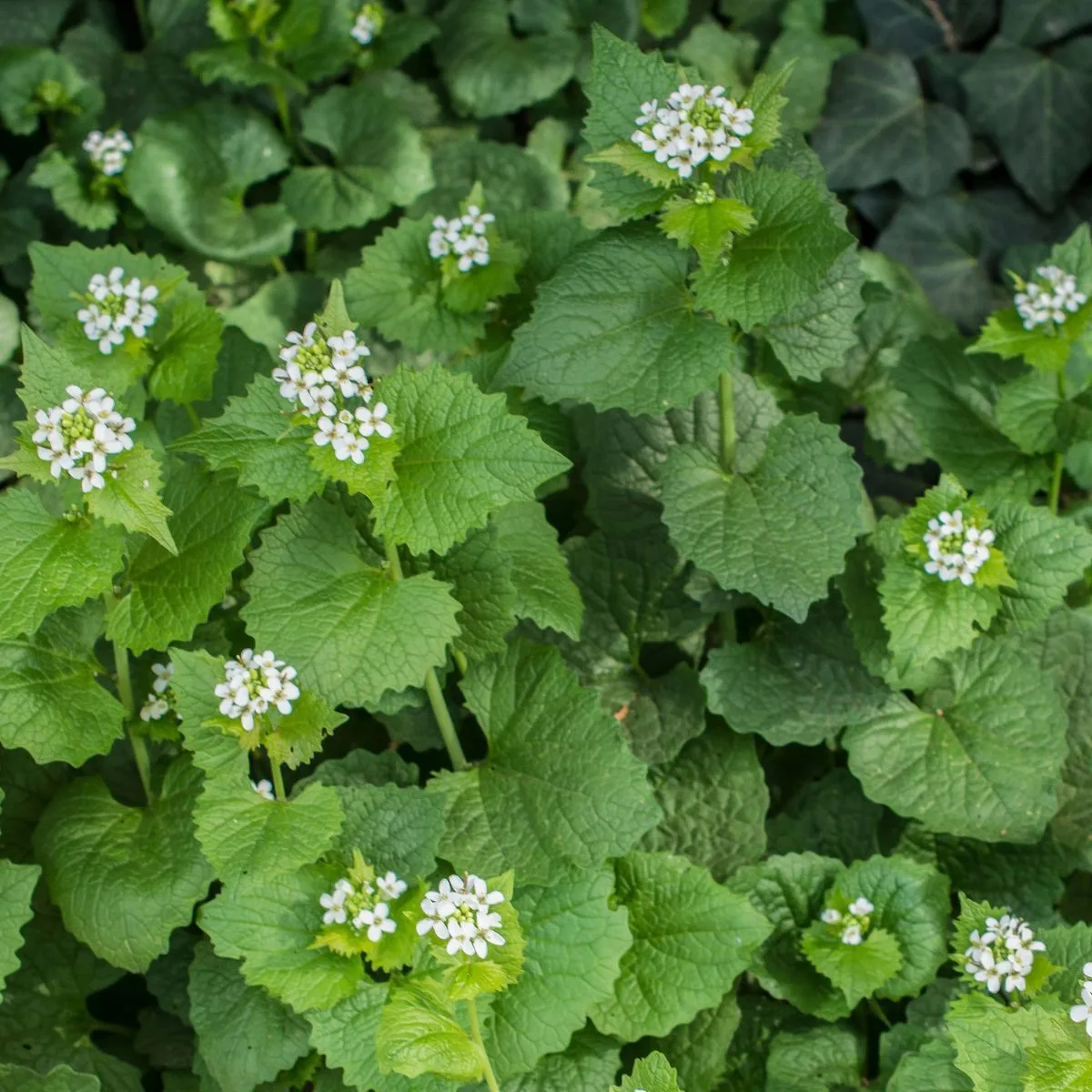
A biennial, garlic mustard forms a low rosette of kidney-shaped leaves in its first year, then sends up a tall flower stalk in year two. The alternate leaves have scalloped edges, and those higher up the stem appear more triangular. In late spring, mature plants produce terminal clusters of tiny white flowers, followed by slender seed pods. When crushed, the plant has a garlicky odor.
Wild ginger (Asarum canadense) provides ground cover with similar foliage, and bloodroot (Sanguinaria canadensis) produces showy, white spring flowers.
6. Leafy spurge (Euphorbia esula)
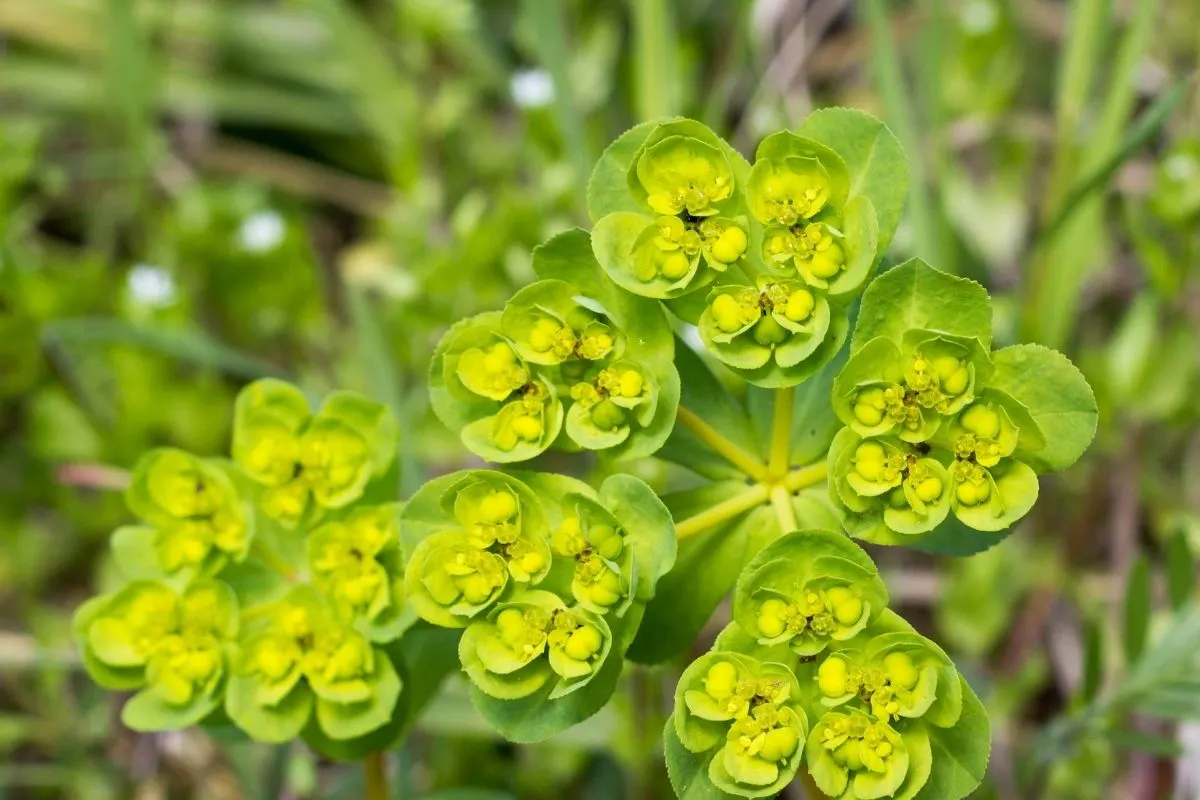
Leafy spurge, an herbaceous perennial, thrives in open areas and can grow up to four feet tall. The smooth, long, narrow leaves grow in an alternate pattern and appear scalelike lower on the stem. When broken, the plant emits an irritating white, milky sap, so take care handling it. Clusters of small flowers with showy yellow-green bracts bloom from late spring into fall.
Grass-leaved goldenrod (Euthamia graminifolia) has a similar appearance, or you can attract butterflies to the garden with whorled milkweed (Asclepias verticillata).
7. Spotted knapweed (Centaurea stoebe subspecies micranthos)

A biennial or short-lived perennial, spotted knapweed grows two to three feet tall and forms dense cover in open habitats like prairies and pastures. To make matters worse, livestock avoid eating it, allowing it to spread unchecked in grazing areas if not controlled. Its gray-green, deeply incised leaves form a low rosette the first year, and it sends up a wiry flower stalk in the second year. Pink to purple thistlelike flowers bloom in late summer. Wear gloves to handle the plant, as it can be a skin irritant.
Purple prairie clover (Dalea purpurea) and one of my favorites, wild bergamot (Monarda fistulosa), are lovely alternatives.
8. Wild parsnip (Pastinaca sativa)
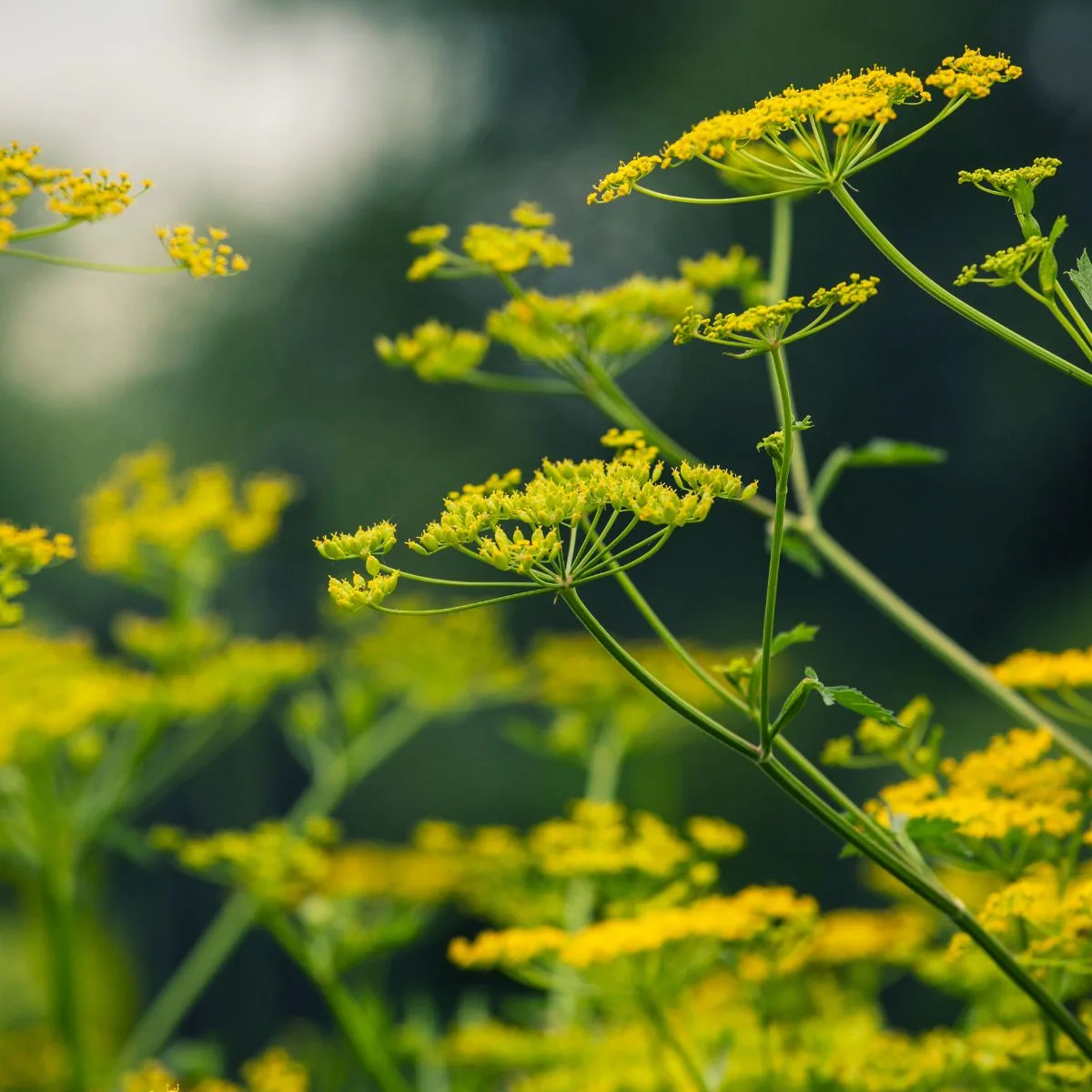
Another biennial or short-lived perennial, wild parsnip also has extremely irritating sap. For its first year or more, it grows as a low rosette of compound leaves. The lobed, egg-shaped leaflets have coarse teeth along their margins. The stout stems are hollow and have distinctive grooves. In summer, mature plants produce broad, flat clusters of tiny yellow flowers. Straw-colored, disc-shaped seeds follow.
Golden alexanders (Zizia aurea) produce very similar yellow flower clusters, and cow parsnip (Heracleum lanatum) is a good white-blooming alternative.
Ready to dig in? Look around your yard for the common invasive plants of Minnesota listed above. This state has many more non-native species, such as purple loosestrife, oriental bittersweet, Japanese barberry, zebra mussels, Japanese knotweed, yellow starthistle, European buckthorn, and more. This is just a short list of the most common invasive species. Remember to look up (or ask for) proper control techniques, then implement them!
Once you’ve removed the problem plants, you get to have fun filling in the space with native plants that not only add beauty to your garden but also serve an important role in the surrounding ecosystem. They might even attract butterflies and songbirds!
